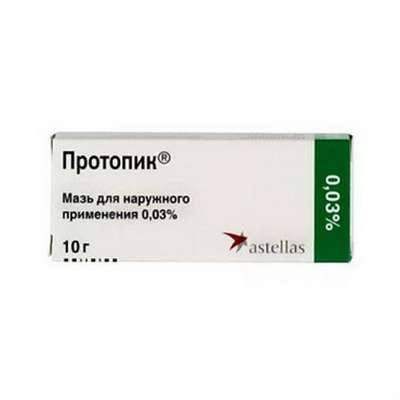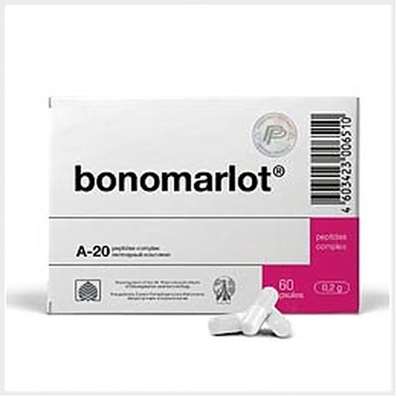Instruction for use: Siozam
I want this, give me price
Dosage form: coated tablets
Active substance: Citalopram*
ATX
N06AB04 Citalopram
Pharmacological groups:
Antidepressant
The nosological classification (ICD-10)
F32 Depressive episode: Adynamic subdepression; Astheno-adynamic subdepressive states; Asthenoadressive disorder; Astheno-depressive disorder; Asthenodepressive state; Astheno-depressive state; Major Depressive Disorder; Vyaloapatichesky depression with retardation; Double Depression; Depressive pseudodement; Depressive illness; Depressive mood disorder; Depressive disorder; Depressive mood disorder; Depressive state; Depressive disorders; Depressive syndrome; Depressive syndrome larviated; Depressive syndrome in psychoses; Depressed masks; Depression; Depression Depletion; Depression with the phenomena of inhibition within the framework of cyclothymia; Depression is smiling; Involutional depression; Involutionary melancholy; Involutional depression; Manic-depressive disorder; Masked Depression; Melancholic Attack; Neurotic depression; Neurotic depression; Shallow Depression; Organic depression; Organic depressive syndrome; Simple depression; Simple melancholic syndrome; Psychogenic depression; Reactive depression; Reactive depression with moderate psychopathological symptoms; Reactive depressive states; Reactive depression; Recurrent depression; Seasonal depressive syndrome; Severostatic depression; Senile Depression; Symptomatic Depression; Somatogenic depression; Cyclotymic depression; Exogenous depression; Endogenous depression; Endogenous Depressive Conditions; Endogenous Depression; Endogenous depressive syndrome
F33 Recurrent depressive disorder: Major depressive disorder; Secondary depression; Double Depression; Depressive pseudodement; Depressive mood disorder; Depressive disorder; Depressive mood disorder; Depressive state; Depressive syndrome; Depressed masks; Depression; Depression is smiling; Involutional depression; Involutional depression; Masked Depression; Melancholic Attack; Reactive depression; Reactive depression with moderate psychopathological symptoms; Reactive depressive states; Exogenous depression; Endogenous depression; Endogenous Depressive Conditions; Endogenous Depression; Endogenous depressive syndrome
F40.0 Agoraphobia: Fear of open space; Fear of being in a crowd
F42 Obsessive-compulsive disorder: Obsessive-compulsive syndrome; Obsessive compulsive states; Obsessive-compulsive syndrome; The Obsession Syndrome; The obsession neurosis; Obsessive-compulsive neurosis; Obsessions
Composition and release form
Tablets covered with a film membrane 1 tab.
citalopram hydrobromide (in terms of citalopram) 20 mg; 40 mg
auxiliary substances: corn starch; lactose monohydrate (milk sugar); Povidone (PVP 25000); ICC; sodium carboxymethyl starch (primogel); glycerol (glycerol); magnesium stearate
composition of the shell: Opadry II - hypromellose (hydroxypropylmethylcellulose); lactose monohydrate; macrogol (polyethylene glycol 4000); titanium dioxide
in a planar cell pack of 10; in a pack of cardboard 1 or 2 packs.
Description of dosage form
The tablets covered with a film cover, white color, round, biconcave form, with a risk.
Pharmachologic effect
Pharmacological action - antidepressant.
Pharmacodynamics
Citalopram is an antidepressant that belongs to the group of selective serotonin reuptake inhibitors. Possessing a pronounced ability to inhibit serotonin reuptake, does not have or has a very weak ability to bind to a variety of receptors, including histamine, muscarinic and adrenoreceptors. Citalopram to a very small extent inhibits cytochrome P4502D6 and, therefore, does not interact with drugs metabolized by this enzyme (the risk of side effects and toxic effects is lower).
The antidepressant effect usually develops after 2-4 weeks of treatment. Citalopram has virtually no effect on the conduction system of the heart and blood pressure, on hematologic indices, liver and kidney function, does not cause weight gain.
Citalopram does not interfere with the cognitive functions of a person, does not cause sedation, in experimental studies, the drug does not show teratogenic effects, effects on reproductive function and perinatal development of offspring.
Pharmacokinetics
Bioavailability of citalopram is about 80% and practically does not depend on food intake. Cmax in plasma is achieved 2-4 hours after administration. Binding to plasma proteins is less than 80%. The plasma is present unchanged. At doses of 10-60 mg / day pharmacokinetic parameters have a linear dependence. The volume of distribution is 12 l / kg. The equilibrium concentration with a daily single dose is established after 7-14 days. Penetrates into breast milk.
Metabolized by demethylation, deamination and oxidation involving cytochrome P450 (isozymes CYP3A4 and CYP2C19) with the formation of less pharmacologically active metabolites.
T1 / 2 - 1.5 days. Excretion is performed by the kidneys and with feces.
Patients over the age of 65 years
There is a longer biological T1 / 2 (1.5-3.75 days) and lower values of Cl (0.08-0.3 l / min). Concentrations that were observed in the equilibrium state in elderly patients were almost 2 times higher than those observed in younger patients who received the same dose.
Lack of liver function
In patients with reduced liver function, citalopram is withdrawn more slowly. The biological half-life of citalopram is almost doubled and the equilibrium concentrations of citalopram in plasma are almost 2 times higher than in patients with normal liver function after administration of the same dose.
Lack of kidney function
The excretion of citalopram proceeds more slowly in patients with a small and moderate degree of renal dysfunction without a significant effect on the pharmacokinetics.
The indications of the preparation are Siozam
depression of different etiology (treatment and prevention);
panic disorders (including with agoraphobia);
obsessive-compulsive disorder (obsessive-compulsive disorder).
Contraindications
hypersensitivity to citalopram or to any component included in the formulation;
simultaneous use with MAO inhibitors, and also within 14 days after discontinuation of their intake; treatment with MAO inhibitors can be initiated no earlier than 7 days after discontinuation of citalopram;
children's age (efficacy and safety of use not established).
Carefully:
insufficient liver and / or kidney function;
presence of convulsive fits in the anamnesis;
patients older than 65 years;
presence of drug dependence (including in history);
mania; Hypomania.
Application in pregnancy and lactation
Citalopram should not be given to pregnant and breast-feeding women unless the potential clinical benefit prevails over theoretical risk, because the safety of the drug during pregnancy and breastfeeding in humans is not established.
Side effects
From the nervous system: rarely - asthenia, drowsiness or insomnia, anxiety, tremor, agitation, amnesia, apathy, extrapyramidal effects, mood changes, aggressive behavior, depersonalization, emotional lability, euphoria, manic and / or psychotic (incl. hallucinations) disorders, panic reactions, serotonin syndrome (agitation, confusion, diarrhea, hyperthermia, hyperreflexia, ataxia).
From the digestive tract: rarely - dry mouth, nausea, vomiting, hypersalivation, flatulence, diarrhea, abdominal pain, anorexia.
From the cardiovascular system: rarely - bradycardia, lowering blood pressure, orthostatic hypotension, arrhythmia.
On the part of the organs of hematopoiesis: rarely - thrombocytopenia, bleeding.
From the senses: rarely - mydriasis, paresis of accommodation, a taste disorder.
On the part of the reproductive system: violation of sexual function (violation of ejaculation, decreased libido, impotence, menstrual irregularities).
Allergic reactions: skin rash, rarely - epidermal necrolysis, rhinitis, sinusitis.
Other: rarely - hyperthermia, polyuria, mastodinia, galactorrhea, hyponatremia, urination disorder, arthralgia, myalgia, yawning, gnashing of teeth, increase or decrease in body weight, dyspnea.
Interaction
Strengthens the effect of sumatriptan and other serotonergic drugs. Does not affect the effects of ethanol, lithium drugs, benzodiazepines, antipsychotics (neuroleptics), narcotic analgesics, beta-adrenoblockers, phenothiazines, tricyclic antidepressants, antihistamines and hypotensive drugs.
To an insignificant degree inhibits cytochrome P4502D6, due to which it weakly interacts with drugs that are metabolized with its participation.
With simultaneous administration with MAO inhibitors, the development of hypertensive crisis (serotonin syndrome) is possible.
Cimetidine increases the concentration in the blood and increases the effect of citalopram.
At simultaneous appointment with warfarin PV increases by 5%.
Dosing and Administration
Inside, at any time of the day, regardless of meals, once.
Depression: the recommended daily dose of Siozam is 20 mg. Depending on the patient's individual response to treatment and the severity of the disease, the dose may be increased; the maximum daily dose is 60 mg. Usually, the antidepressant effect of the drug is observed after 2-4 weeks of treatment. Treatment with antidepressants should be carried out for a long time. Usually, to prevent recurrence, treatment should be performed for 6 months or even longer. Patients with recurrent depression should receive maintenance treatment for several years to prevent the onset of subsequent phases of the disease. If the treatment is completed, the Siozam should be canceled gradually within a few weeks.
Panic disorders: the recommended daily dose is 10 mg during the first week of treatment, after which the dose is increased to 20 mg / day; the maximum daily dose is 60 mg. In the treatment of panic disorder, the maximum effect of citalopram is observed after 3 months of treatment. This effect persists throughout the period of maintenance therapy.
Obsessive-compulsive disorder: the recommended daily dose is 20 mg. Depending on the patient's individual response to treatment and the severity of the disease, the dose may be increased; the maximum daily dose is 60 mg. In the treatment of obsessive-compulsive disorder, the effect of the drug appears after 2-4 weeks of treatment; With continued treatment, further improvement may be observed.
Patients at the age of 65 years and older the maximum daily dose is not more than 40 mg.
Impaired renal function: patients with mildly or moderately impaired renal function may apply the drug in normal doses. Currently, the experience of treating patients with severe renal function deficiency (Cl creatinine below 20 ml / mol) is negligible.
Disrupted liver function: patients with impaired liver function should not be prescribed more than 30 mg / day.
Overdose
Symptoms: nausea, dizziness, drowsiness, dysarthria, heart rhythm and conduction disorder (prolongation of the QT interval, sinus tachycardia, nodal rhythm), increased sweating, cyanosis, tremor, amnesia, confusion, rhabdomyolysis, seizures, coma.
Treatment: gastric lavage, symptomatic and maintenance therapy; there is no specific antidote.
Special instructions
When developing manic state the drug should be canceled.
Patients with drug dependence (including history) need supervision and control over the use of the drug.
Treatment with MAO inhibitors can be initiated no earlier than 7 days after stopping citalopram.
Care should be taken when prescribing during breastfeeding due to the risk of drowsiness in infants, a reduction in the sucking reflex, and loss of body weight.
In elderly patients, a dose reduction of citalopram is required.
Citalopram usually does not affect the intellect and psychomotor functions.
However, it is recommended that patients who take psychotropic medications are informed that their ability to concentrate and show attention may be somewhat disturbed as a result of their illness or the action of the drugs taken, or as a result of a combination of these two factors.
Storage conditions for Siozam
In a dry, the dark place at a temperature of no higher than 25 ° C.
Keep out of the reach of children.
Shelf life of Siozam
2 years.
Do not use after the expiry date printed on the package.

 Cart
Cart





